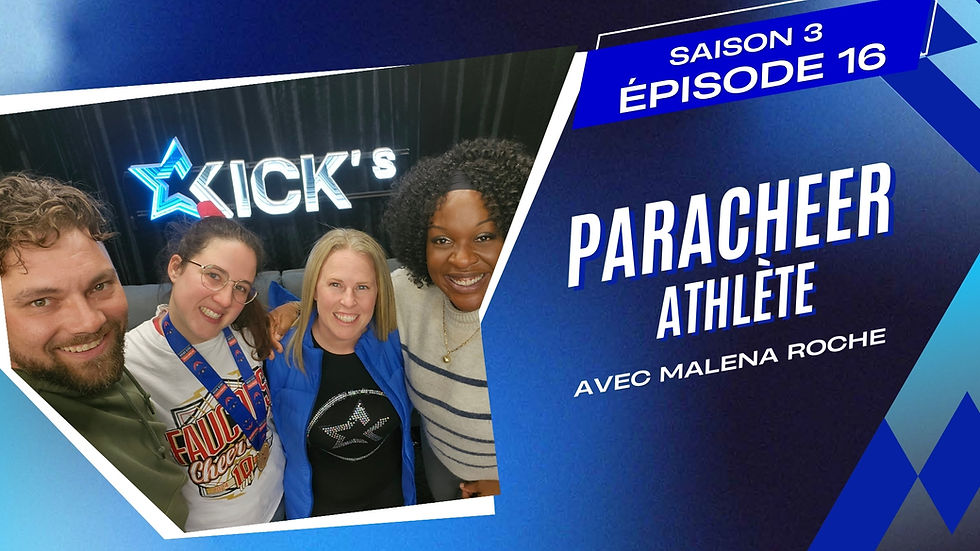Understanding Cheerleading Levels: A Simplified Guide for Parents and Athletes! (S2.2)
- janie724
- Jul 14, 2025
- 3 min read
Updated: Jul 21, 2025
Episode of September 9, 2024
In this episode of the Kick's Cheer Podcast, we help you better understand one of the most confusing, yet essential, topics in cheerleading: levels. Whether you're a curious parent or a beginner (or even an experienced) athlete, here's a clear summary of what you need to know.
7 Levels of Cheerleading 💪
Currently, there are 7 levels of cheerleading, ranging from level 1 (beginner) to level 7 (elite). Unlike in school, there is no automatic "graduation" each year . The transition from one level to another depends on the athlete's skills and the rate of progression. On average, it takes 2 to 3 years per level to fully master all the necessary skills.
🏃♀️ It's not a race: every course is unique.
There is no single path in cheerleading. Some athletes may stay at the same level for several years, while others progress more quickly. In some cases, a level can even be skipped. For example, a very strong athlete could go directly from level 3 to level 5, depending on their abilities and the needs of the team or club. While this is possible, it is not encouraging.
But it's not just a question of talent: there are also personal choices. Some prefer to stay on a team with their friends, even if a higher level is accessible. And that 's totally valid !
And what about the divisions?
In All-Star, the levels are combined with the age divisions (U6, U8, U12, U18, Open, etc.), which creates several categories . This year, there are just over 70 categories in All-Star, which are divided into 4 main categories.
Paracheer (inclusive cheer)
Novice
Prep
All-Star (regular).
So to have your "complete category" you need to combine these 3 things:
The type of division (All-Star, Prep, etc.) - the age category and level to give something like: All-Star - U12 - Level 1
This large number of categories may seem like a lot, but each has a purpose. They allow for balanced progression, adapted to the age, experience, and development of each athlete.
🧐 The famous level 4!
Level 4 is a bit unusual: it's often less popular than the others. Why?
Because, when you are strong enough to do level 4, you are often not far from level 5 , which allows you to participate in the World Championships . There are also versions 4.0 and 4.2 , which allow athletes with less gymnastic skills (tumbling) to perform in building (stunts and pyramids).
Athletes stay longer
Good news: Statistics show that athletes age with the sport . By adding categories like zero point (0.0) , more young adults are staying in cheer longer. This makes the sport more inclusive and sustainable, and allows for better retention in clubs.
Why do some categories disappear?
Every year, federations make adjustments. Some categories are removed when there are not enough registered teams, such as the Global or certain U18 Novice divisions. The goal is to simplify competitions while maintaining a logical progression for athletes.
🤔 Will there be even fewer categories in the future?
Perhaps. This year, a few less popular categories have been removed, particularly some in the younger age groups or less crowded international divisions. The idea is to simplify competitions, ensure that teams don't compete alone, and still ensure the athletes' progression . The current system seems to be working well for the majority.
In summary
There are 7 levels in cheerleading, but progression depends on each athlete.
There are also several age and style categories (Prep, Novice, All-Star, Scholastic, etc.).
Adjustments are made each year based on the popularity of the divisions.
Cheerleading is evolving well, with athletes staying engaged longer .
💻 To learn more, visit the Cheer Québec website to view the official grids, categories, and even a glossary to understand all the cheer terms.
📲 Follow Kick's Cheer on social media and stay tuned for upcoming episodes!






Comments